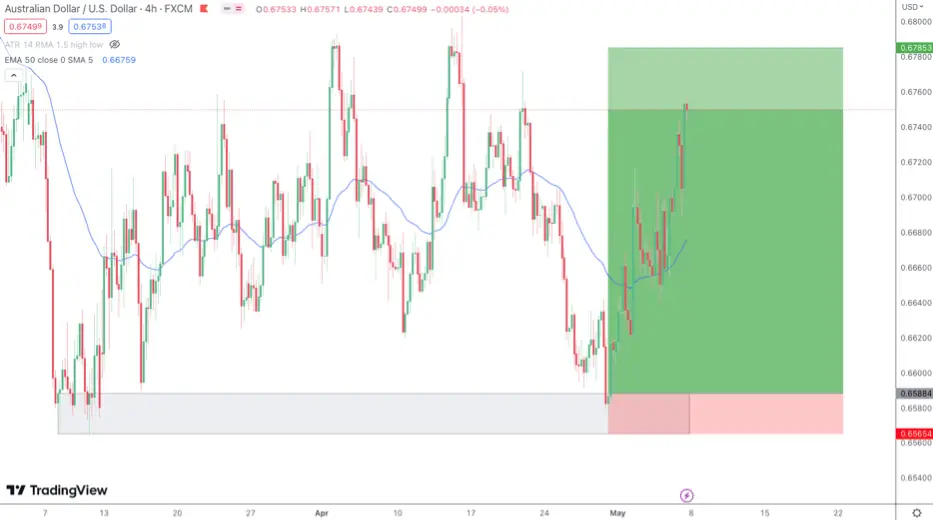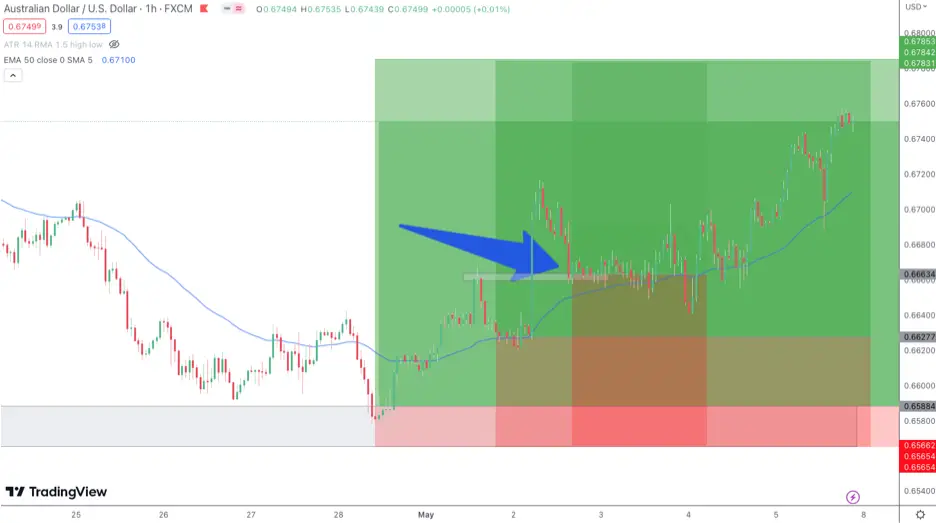For many traders, once your initial order, whether buy or sell, has been placed in the market – there is little more that needs to be done.
However, many profitable traders are using open trades as a great opportunity to scale into their positions, increasing their profits per trade without taking on any additional risk. What more could you want? Making more pips in winning trades, whilst risking nothing extra!
In this article we will look at what scaling in forex means, the benefits of scaling into trades and how you can successfully scale into your winning positions.
What Is Scaling Into Forex Trades?
The principle of scaling into trades is very simple. You’re aiming to increase the profits on your winning trades, without holding them for longer or adding any additional risk to the trade exposure.
It can work against traders and actually take you out of winning trades, but it shouldn’t be costing you to lose more than your initial risk on the first entry!
We’ve seen traders add upwards of 10 positions on winning swing trades and end up exponentially increasing their profits without incurring any additional risks.
Scaling can also be done into losing positions too, but this can be very risky and often ends in traders mismanaging positions and ending up in a worse position – so we’d advise only attempting to scale in if your trade is running in profit.
The Benefits Of Scaling Into Forex Trades
There are many benefits to scaling into forex trades but it really comes down to two main advantages…
- Increased Profits
If scaling is done properly, you should be scaling into winning positions and trades. This means that during a 100 pip move, you may be able to make 150-200 pips, rather than just the 100 pips you would have made with only one position open.
Of course, this isn’t going to work everytime and sometimes scaling into positions can be more of a headache than anything else!
However, if you build a robust scaling system into your trading plan, the majority of traders notice a huge increase in profits per trade and really make the most of trading opportunities within the markets.
There are actually various forex bots that can do this for you – however, we’d advise scaling into positions manually!
- No Additional Risk
Again, if scaling is done properly, you should not take on any additional risk in the trade. For example, if you risked £100 in the initial entry, once you’ve scaled into the trade with another position, your risk should still be £100 for the 2 trades.
This is simply due to manipulating your stop losses and position sizes within the trades to ensure that your risk matches that of your initial position.
Many traders manage to do this wrong and just add further ‘full risk’ positions into the markets, thus doubling or even tripling their risk exposure. This isn’t scaling, this is just adding positions and needs to be avoided if you’re looking to keep your risk exposure low.
How To Scale Into Trades?
So now we have looked at what scaling is and the benefits of scaling, let’s look at how to scale into forex trades.
Firstly, let’s look at the logic.
- The trade is in a sensible profit, at least 1:1 risk reward.
- You reduce the stop loss size of the entry, hopefully to break even if possible. You have now reduced your risk in this trade to £0, rather than the example £100.
- You were still willing to risk £100 in this move, so you have £100 to play with.
- You enter another position at a suitable price action entry. You’re risking £100 on this new position, with a much smaller lot size and larger stop loss.
- Your risk is now £100, but you’ve got much larger lot size exposure in the market – thus, more profits on a winning trade!
Hopefully this makes sense, but sometimes it’s easier to look at chart examples. Let’s take this example below:

This is AUDUSD on the 4H timeframe. You can clearly see a demand zone highlighted on the left. When price enters back into this zone, you have a pending order set – buying the market. You’re risking £100 on this entry.

Once we are running at atleast 1:1 RR, we are looking for a scale in opportunity. As we break and retest the 50 EMA on the 1H timeframe, we move the stop loss on position 1 to breakeven.
We now enter a buy on the 1H, with a £100 stop loss. It’s important to make the stop loss wide here – using the original positions stop loss if possible.

Once position 2 is running at least 1:1 RR, we’re repeating the process – moving the stop loss to breakeven once another scaling opportunity appears. We have a break and retest of high, along with EMA confluence, so we enter another position with a large stop loss valuing £100.
We’ve now managed to add 3 positions into this trade, resulting in a much larger profit.
Without scaling in, we’d have banked £850 from this trade.
With scaling in, we’d have banked £1200 from this trade – without taking on any additional risk. That’s roughly a 50% increase in the profits from this trade!
Typically speaking, you only want to scale into trades when you’re expecting a fairly large move in the markets and it lines up with your fundamental bias as there’s no point adding positions onto a 10 pip move.
Utilize all of the technical tools in your arsenal to provide scale in opportunities. Typically, EMA’s and structure plays provide great entry points for you but ensure you’re using a sizable stop loss.
In Summary – How Do You Scale Into Forex Trades?
In short, scaling into trades is a very simple premise whereby you look to reduce the risk on previous entries and add more entries, ensuring your total risk stays at the same dollar value as the original position!
By using price action and manipulating your stop losses, you should be able to drastically increase your profits in winning trades, whilst not increasing your risk exposure.


